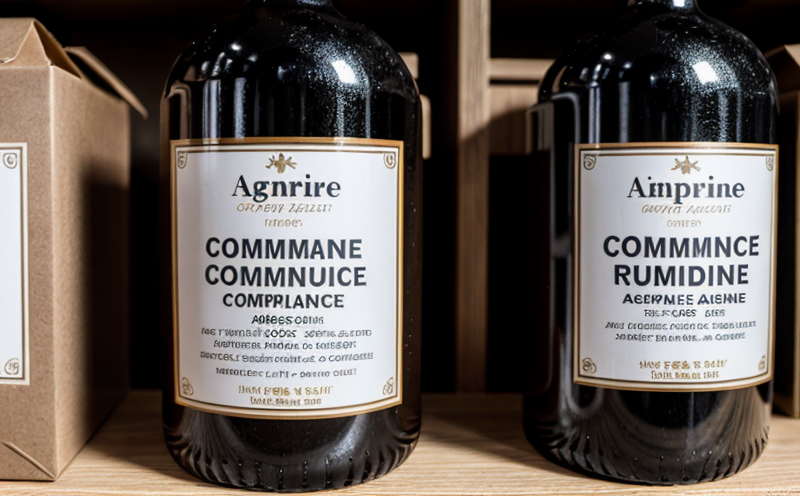EN 71-1 Small Parts Labeling Requirement Check
EN 71-1:2019, a standard that sets safety requirements for toys and similar products intended primarily for use by children under the age of 14, mandates strict labeling regarding small parts. This requirement aims to protect children from potential choking hazards due to small components within play items such as blocks, action figures, or construction kits.
The regulation specifically refers to small objects that could be swallowed or inhaled by a child and requires manufacturers to place a specific label on the product indicating whether it contains any parts that are considered "small." This labeling is crucial for ensuring compliance with safety standards and preventing harm. The standard defines small parts based on dimensions and weight, which vary depending on the age group of the intended user.
For instance, if a toy has components like beads or buttons smaller than certain dimensions (typically 10mm x 5mm), it must be clearly marked as containing small parts suitable only for older children. Failure to comply with these labeling requirements can result in product recalls and legal consequences. Therefore, understanding the nuances of this regulation is essential for any company involved in toy manufacturing or import.
To assist manufacturers in meeting these stringent safety standards, our laboratory provides a comprehensive service that includes checking whether the products meet the small parts labeling requirement specified in EN 71-1:2019. This involves detailed inspection and measurement of all relevant components to ensure they do not exceed permissible dimensions for the age group indicated on the product.
Our experts use precision tools like calipers, micrometers, and other specialized equipment to measure parts accurately. Once measured, our team compares these findings against the defined small parts criteria outlined in EN 71-1:2019 to determine if labeling is necessary. If any part falls outside acceptable limits for a particular age category, we provide detailed reports along with recommendations on appropriate labeling.
Compliance with this standard not only helps safeguard public health but also enhances brand reputation by demonstrating commitment to quality and safety. By ensuring accurate labeling according to EN 71-1:2019 guidelines, businesses can avoid costly penalties associated non-compliance while maintaining consumer trust and confidence in their products.
Benefits:
- Avoids potential product recalls due to small parts hazards
- Enhances brand reputation through adherence to international safety standards
- Reduces liability risks by ensuring compliance with regulatory requirements
- Saves time and resources by providing clear recommendations for labeling
- Ensures accurate measurement and labeling of all relevant components
- Provides detailed reports that support decision-making processes regarding product design and marketing strategies
Applied Standards
The primary standard applied in our EN 71-1 Small Parts Labeling Requirement Check service is EN 71-1:2019. This European standard specifies the mechanical and physical properties of toys, including requirements for small parts labeling. It aims to ensure that toys pose no risk to children due to their design or construction.
The standard defines "small" objects as those with dimensions less than 5mm in any direction or weighing less than 20g. For different age groups, there are specific criteria regarding the size and weight of parts that could be considered hazardous if ingested by a child. Manufacturers must assess these factors carefully to determine whether their products require labeling indicating potential small parts.
In addition to EN 71-1:2019, we also consider other relevant international standards such as ASTM F963, which is another major set of criteria for toy safety. While the focus here is on EN 71-1:2019, it’s important to note that many countries adopt multiple sets of regulations to ensure comprehensive protection against risks associated with children's playthings.
Our laboratory adheres strictly to these standards during every step of our testing process, ensuring that all findings are accurate and reliable. By doing so, we help clients stay ahead of changing regulatory landscapes and maintain high levels of product safety.
Scope and Methodology
The scope of our EN 71-1 Small Parts Labeling Requirement Check service encompasses a thorough examination of toys or similar products intended for children under the age of 14. Our aim is to verify compliance with the small parts labeling requirement stipulated in EN 71-1:2019, ensuring that no component falls within hazardous dimensions for any specified age group.
The methodology involves a systematic approach starting from receipt of samples until final reporting. Upon receiving a sample, our technical staff carefully inspects it for visible small parts. Using high-resolution imaging techniques and advanced measurement tools like calipers, micrometers, and other specialized equipment, we measure each potentially hazardous component meticulously.
Following accurate measurements, our team reviews the results against EN 71-1:2019 guidelines to classify whether any part qualifies as small based on its size or weight. If a part exceeds permissible limits for a particular age group, it is flagged accordingly. Our experts then prepare comprehensive reports detailing all findings along with recommendations for labeling if required.
This rigorous process ensures that our clients receive precise information about their products' compliance status, enabling them to make informed decisions regarding necessary labeling and potential modifications needed to meet regulatory requirements fully.





